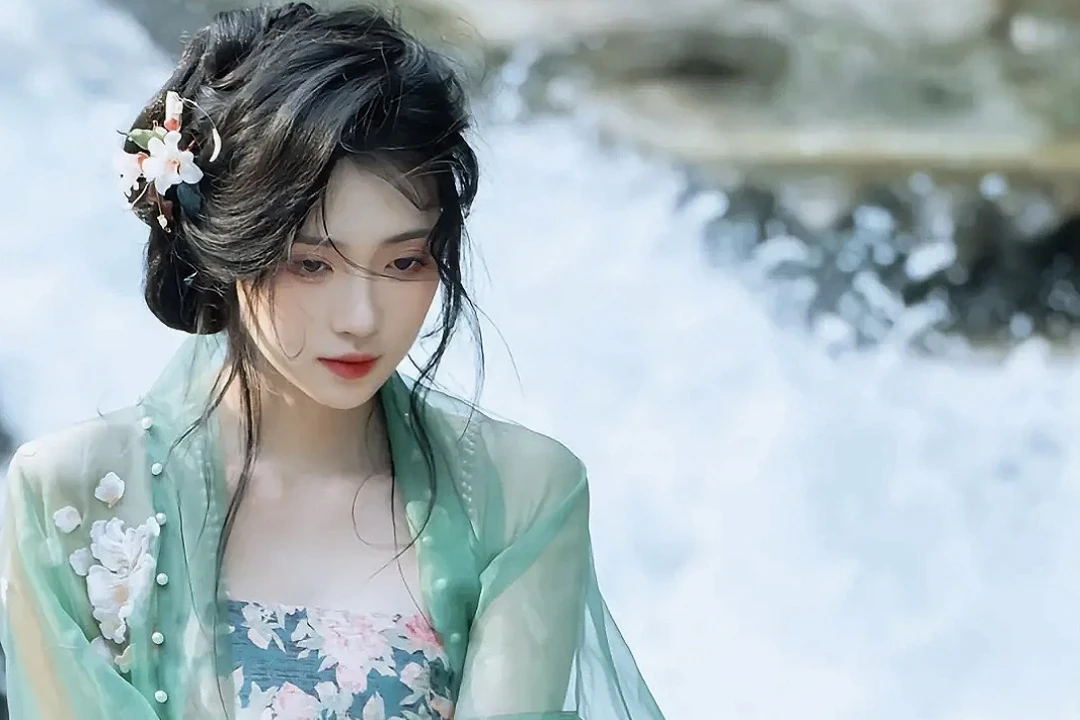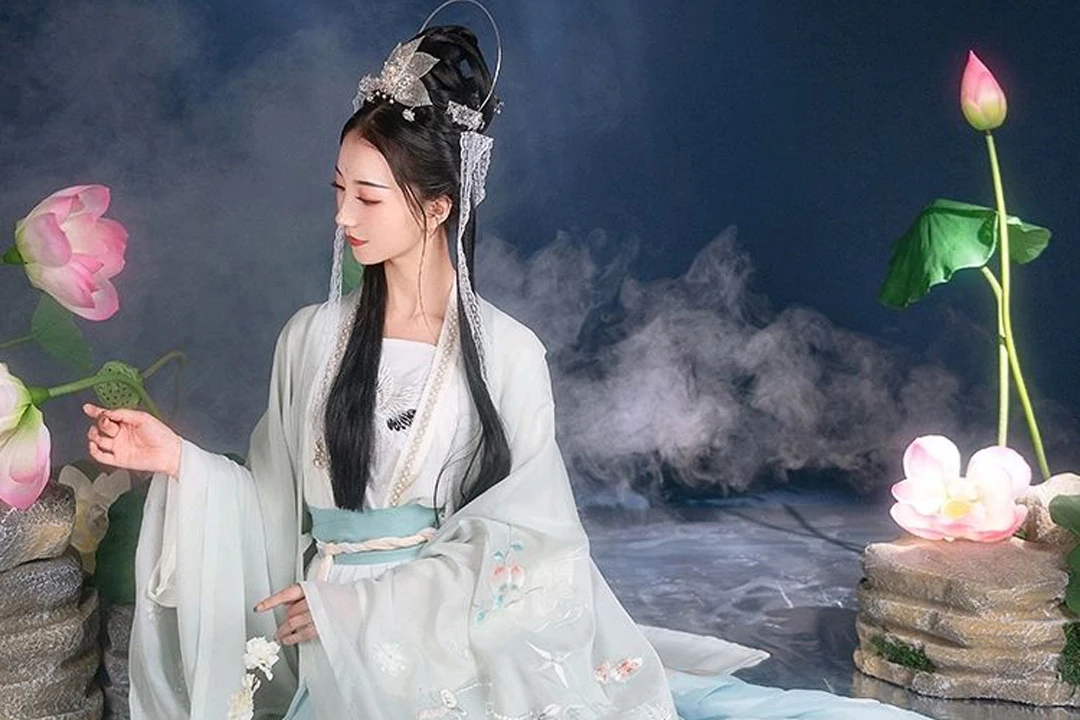Flowers and their symbolic meaning permeate traditional Chinese culture. From royal seals decorated in vibrant peonies to phoenix motifs gracefully curling around plum blossoms, flowers adorn everything from ceramics to courtyard designs across dynastic history. It’s only natural that floral patterns would also grace elegant hanfu dresses, hearkening to the growth, beauty, and connection with nature that flowers represent.
Floral hanfu come in an array of patterns from petite scatter prints to oversized artistic motifs. Each style tells a visual narrative, whether reflecting a single flower or depicting seasonal garden scenes. The variety allows wearers to spotlight their desired cultural meaning and aesthetic while incorporating gorgeous blooms.
Peonies are considered the most prestigious flower in Confucian art and make a striking statement on hanfu. Known as the “king of flowers,” peonies symbolize prosperity, good fortune, and honor. They represent romance, beauty, and feminine nobility. Peony hanfu dresses feature large lush blooming flowers in deep crimsons, lipstick reds, and coral hues. The dramatic oversized petals feel glamorous and auspicious whether for weddings or galas.
While peonies represent spring, plum blossoms exemplify winter. Resilient and elegantly fragrant, plum blossom symbolism encompasses perseverance, hope, and rebirth amidst hardship. Plum hanfu feature delicate linear branches trailing petite florets in pale pinks and creamy whites. Their graceful simplicity inspires fortitude.
Lotus flowers are another hanfu staple representing purity, enlightenment, and longevity. Lotuses emerge unsullied from mud, teaching beauty can rise from adverse conditions. Pink, cream, or yellow splotched lotus hanfu evoke timeless wisdom. Bold graphic flowers and vines capture the intricate organic structure.
For good fortune and riches, bamboo and chrysanthemums are the flower to seek. Chrysanthemums exemplify autumn cheer while bamboo represents longevity. Paired together, they symbolize enduring wealth and joyful bounty. Subtle bamboo and mum hanfu prints exude balanced artistry.
When it comes to expressing love, lotus seed pods (representing offspring), pomegranates (fertility), and osmanthus (romance) pattern hanfu spread romantic promises. Peaches and cherry blossoms radiate exuberant love and springtime coquetry. The imagery feels passionate yet modest.
No discussion of flowers in Chinese culture is complete without mentioning the elegant magnolia. Once reserved exclusively for royalty, magnolia represents candor and nobility. Grand magnolia blossoms with strong leaves exude timeless sophistication, inspiring truthful beauty.
Most plants carry symbolic meaning, like orchids (refinement), lilies (purity), and Prunus (hope). Even butterflies (romance), dragonflies (harmony), and phoenixes (virtue) connect back to nature’s influence. These motifs add personalized depth when applied to hanfu prints and embroidery.
Floral pattern arrangement conveys energy and themes. Color also influences meaning, such as pink representing youth or vermillion representing celebration. Regional styles also carry value, like cloud and flame patterns from Southwest China. Pinecones paired with peonies represent eternal beauty.
For maximum impact, opt for artistically hand-painted hanfu floral prints. The irregular brushstroke creates organic motion across the fabric. Traditional botanical pigments like ochre, Prussian blue, cinnabar, and malachite add antiquity. One-of-a-kind hanfu become heirloom artworks to cherish.
While modern florals befit casual events, more traditional artisan-caliber floral hanfu elevate formal affairs. The exquisite symbolism, artistry, and cultural heritage turn every wear into an inspiring event. Hanfu enable sartorial storytellers to bloom along with the gorgeous patterns adorning their garments.
When selecting floral hanfu dresses, pay attention to the motifs, arrangement of blooms, and materials for maximum impact. The details make the dress.
Larger floral motifs like peonies, lotus, and magnolias make bold statements, while daintier plum blossoms and lily of the valley feel more delicate. Balance colors and scales according to your vision.
Look at the repetition and blank space between the floral patterns too. Are the flowers clustered asymmetrically in natural arrangements, or regularized in checks, strips or medallions? Scattered blooms create organic movement while regimenting adds graphic punch.
Consider textile choices as well. Silk charmeuse or heavy satin look fluid and luxe, evoking an oiled painting. Linen or cotton conveys a more matte relaxed mood with detailed embroidery. Velvet floral hanfu maximize richness, especially during cooler months.
Finally, note seasonal signifiers. Use florals to connect outfits with time passing. Embroidered silk shoes featuring blossoms, petaled fabric pouches and purses, floral hair adornments, and patterned hanfu jackets tied together elevate the floral theme head to toe.
Most importantly, choose flowers that speak to your desired message. Hanfu enables storytellers to personalize their look with cherished blooms reflecting deeply internalized themes. Every petal holds symbolic power.
Floral hanfu connects the wearer to centuries of honoring nature’s beauty. By channeling these timeless motifs, we embrace global folklore along with Chinese philosophy. Artistry and nature intertwine in gorgeously patterned finery feeling profoundly soulful no matter the era. Blooming floral hanfu inspires embracing heritage, community, and personal style simultaneously.


